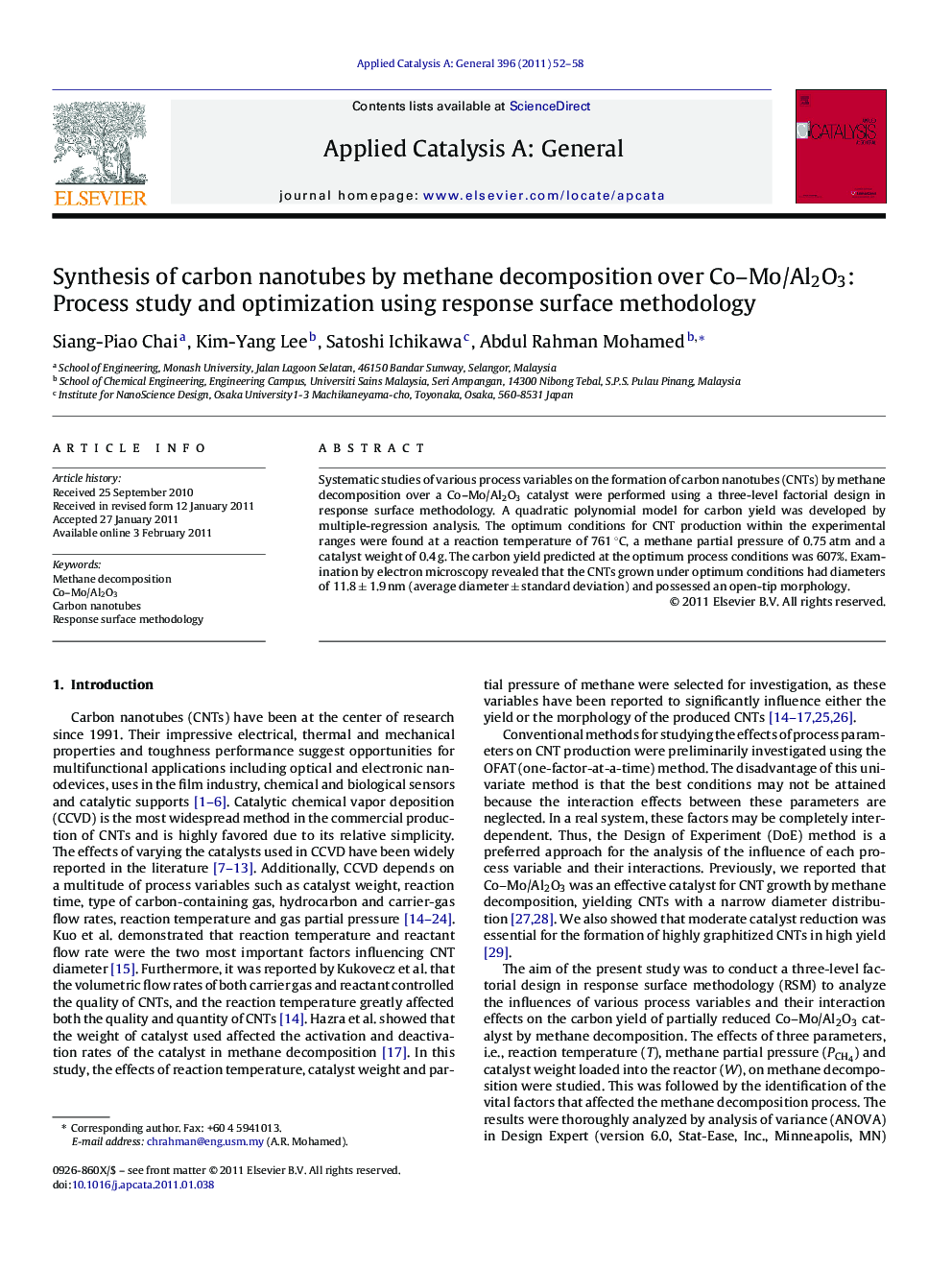| Article ID | Journal | Published Year | Pages | File Type |
|---|---|---|---|---|
| 41679 | Applied Catalysis A: General | 2011 | 7 Pages |
Systematic studies of various process variables on the formation of carbon nanotubes (CNTs) by methane decomposition over a Co–Mo/Al2O3 catalyst were performed using a three-level factorial design in response surface methodology. A quadratic polynomial model for carbon yield was developed by multiple-regression analysis. The optimum conditions for CNT production within the experimental ranges were found at a reaction temperature of 761 °C, a methane partial pressure of 0.75 atm and a catalyst weight of 0.4 g. The carbon yield predicted at the optimum process conditions was 607%. Examination by electron microscopy revealed that the CNTs grown under optimum conditions had diameters of 11.8 ± 1.9 nm (average diameter ± standard deviation) and possessed an open-tip morphology.
Graphical abstractFigure optionsDownload full-size imageDownload high-quality image (263 K)Download as PowerPoint slideResearch highlights► The effects of process variables were examined using RSM three-level factorial design. ►TGA and HRTEM reveal that the CNTs had a high degree of crystallinity. ► TEM and SEM show that CNTs were densely grown and possessed open-tip morphology. ► The open tips had diameters in the range of 3.6–4.8 nm. ► Long CNTs entangled to form aggregated pores with pore sizes within 20–100 nm.
